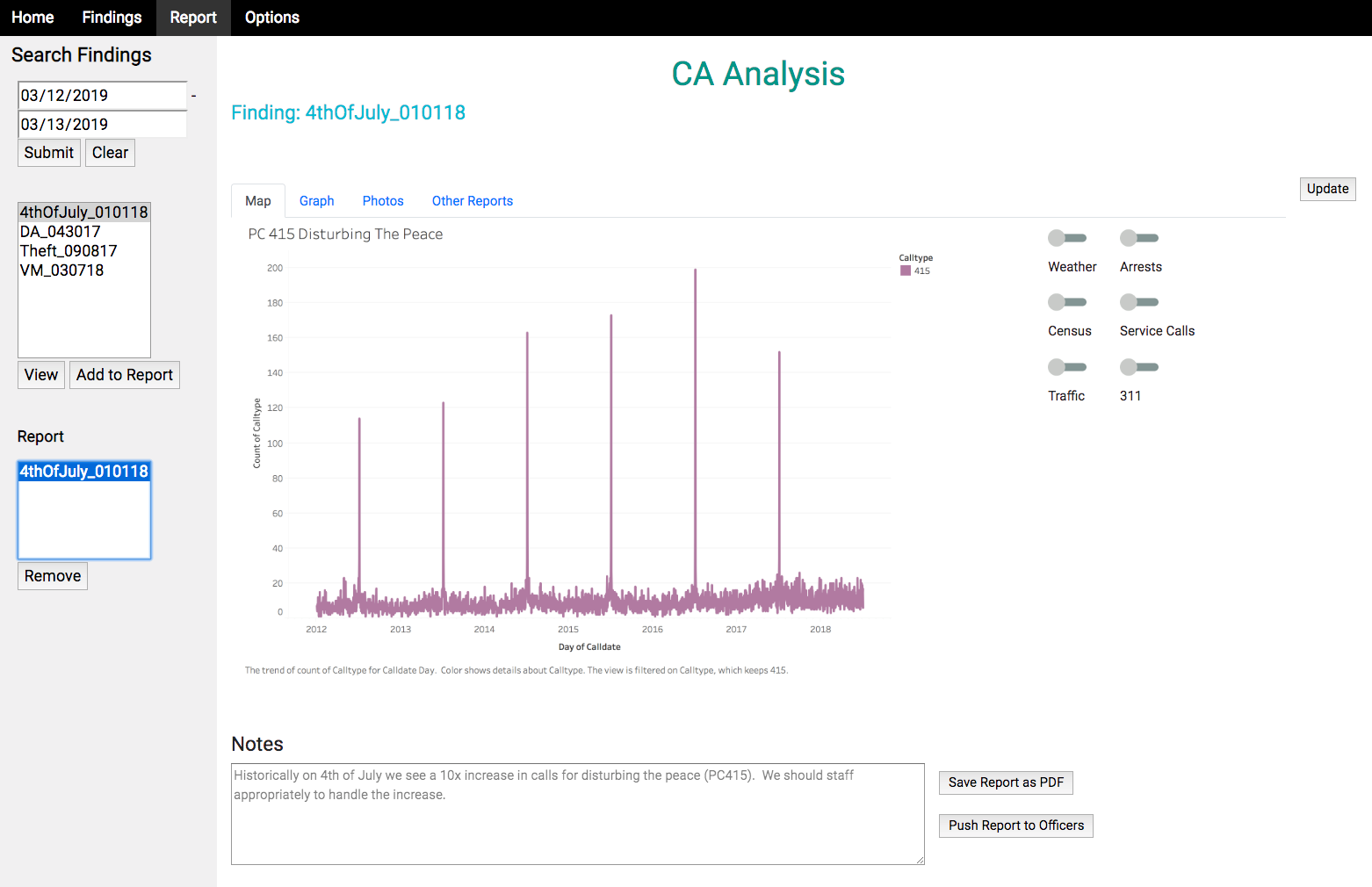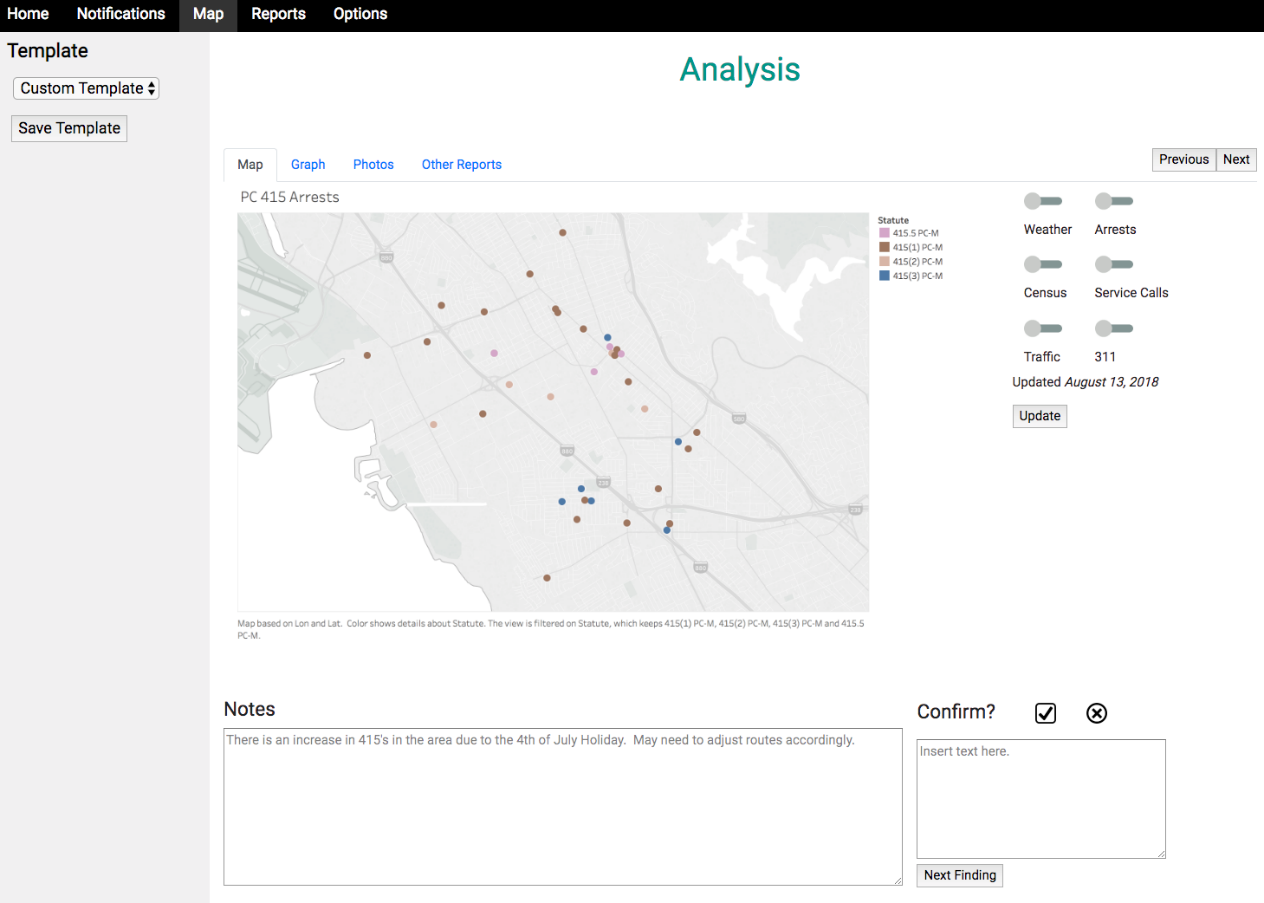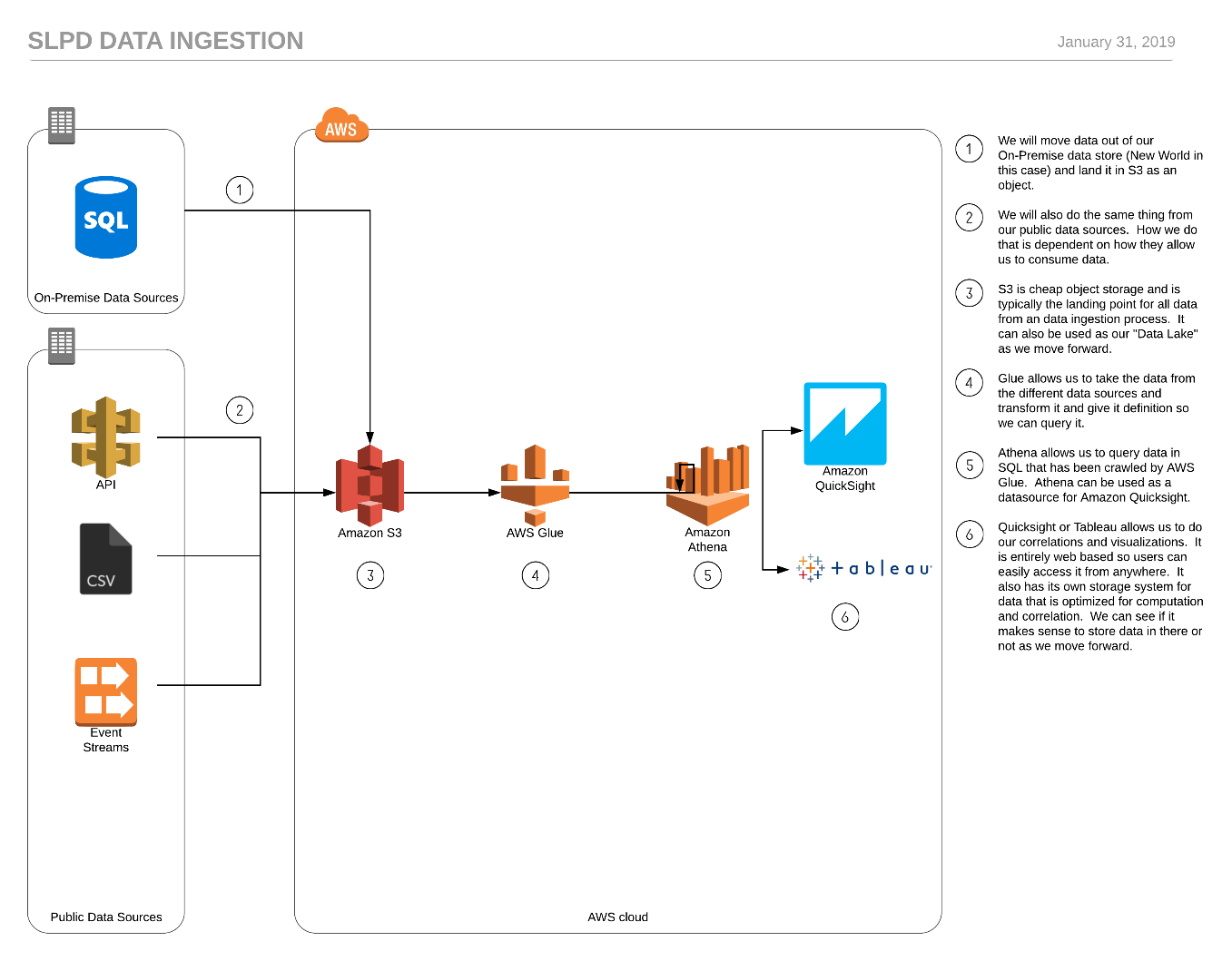San Leandro Police Department Evidence Based Policing
Overview
This innovation challenge began with a discussion with the San Leandro Police Department (SLPD) to explore ways that the City of San Leandro could ‘do more with less’ while reducing or even preventing crime. Championed by California Polytechnic State University’s Digital Transformation Hub (Cal Poly DxHub), the challenge encompassed an applied innovation and product development cycle leveraging Amazon’s Working Backwards methodology. Starting with an Innovation Workshop, SLPD generated ideas and arrived at a consensus on a customer-obsessed solution. Afterwards, a Solutions Workshop was held to scope the prototype, which was subsequently developed over the summer of 2018 by two Cal Poly students, SLPD, PilotCity, and Cal Poly DxHub personnel. Following prototype development, the DxHub team and Cal Poly students continue to refine the idea by diving further into the data to improve the user interface and user experience.
Problem
In most cases, law enforcement agencies react to crime trends after they occur. While law enforcement experts may have hunches as to why crime trends are happening, it is difficult to test and validate those hunches. Evidence Based Policing (EBP) is a methodology that leverages the scientific method and experts to collect and analyze high quality data from a variety of disparate data sets, to test public safety related hypotheses, and examine possible correlations or causations. Done correctly, experts can use EBP to rigorously search for the underlying causes of crime trends, which policing tactics and policies are the most effective, and how specific interventions might mitigate crime trends beyond just day to day policing strategies. The data needed to perform this analysis comes from a variety of public and private sources, including census, weather, transportation, land use, business licensing, social services, public health, and law enforcement. Many cities and counties currently face significant hurdles when they want to analyze data from different sources. Personnel must make requests from disparate data sets that often reside in different locations and within different City departments. Once they get that data, they must merge it into a unified repository, and then perform the necessary analytics to explore and test public safety related hypotheses. This makes implementing Evidence Based Policing and data driven decision making very difficult.

Innovation in Action
An Innovation Workshop was led by the DxHub to guide SLPD, city staff, along with the civic oriented startup ‘Pilot City’ through Amazon’s Working Backwards process enabling them to explore the problem from their customer’s perspective. The team chose the front-line police officer and the citizens that that routinely engage with the police department as the customer personas.
The team brainstormed and came up with a number of different ideas that would help to make EBP a reality. The team then agreed on the best approach and defined the vision of the solution as described in the fictional press release.
In order to realize this vision, a Solutions Workshop was conducted, to describe the breadth and depth of the prototype. During this workshop, the team identified three major topics to exhibit in the prototype:
- Crime Analysts need to be able to visualize data from multiple internal and external data sets within the same tool.
- Crime Analysts need to be able to share their insights with front-line officers and management to help ensure well-informed decisions are made.
- Front-line officers need a web accessible, personalized home dashboard that shows insights from Crime Analysts, and allows them to provide feedback to the Crime Analyst.
An example of the user experience is shown below

Results
To control the scope of the prototype, the team decided to limit the number of data sources to Computer Aided Dispatch and Records Management System (CAD and RMS) data and public external data sources, which included business license, census, and weather data. This would allow for rapid innovation cycles and prove the application’s ability to interact with internal and external data. With the help of two Cal Poly students a lightweight prototype was built using a number of AWS services, which allowed them to test and validate the prototype in a lean and agile way. The resulting prototype included data ingestion architecture that collected, cleaned, and queried data from private and public sources. The data was then featured on the web connected evidence based policing application.

Figure 1: An example of the dashboard the crime analyst would see, showing a large spike of calls for disturbing the peace during 4th of July.
Conclusion
Evidence Based Policing has the potential to significantly alter the cost of providing public safety, while driving down crime rates and improving the quality of life to citizens. This evidence-based, data driven approach, which leverages information beyond the silo of law enforcement is a logical next step to policing and a benefit to the public Worldwide.
It is envisioned that a viable next step is for the SLPD to proceed to pilot the EBP initiative to explore the viability of the strategy and understand its limitations. A real-world implementation and testing (validation cycle) of EBP based intervention, that monitors and measures its effectiveness, will provide tangible evidence of the potential value of EBP. The DxHub intends to track this initiative and report progress of a pilot as an addendum for future publishing.

Figure 2: An example of the dashboard the front-line officer would see, with a list of past calls for disturbing the peace. This information can be used to figure out where they may need to patrol on the 4th of July.

Figure 3: Evidence Based Policing application process diagram.
Supporting Documents
Amazon’s Working Backwards process results in several artifacts that help inform and guide the end result. Below is a description of each and their purpose in the process:
|
During the Innovation Workshop, a fictional Press Release and nonfictional |
|
|
A document that describes an overview of the process and solution. |
|
|
A series of frames designed to illustrate the problem and the impact of the solution visually. |
|
|
A diagram that describes the technical components needed to implement the solution. |
About the DxHub
The Cal Poly Digital Transformation Hub (DxHub) is a strategic relationship with Amazon Web Services (AWS) and is the world’s first cloud innovation center supported by AWS on a University campus. The primary goal of the DxHub is to provide real-world problem-solving experiences to students by immersing them in the application of proven innovation methods in combination with the latest technologies to solve important challenges in the public sector. The challenges being addressed cover a wide variety of topics including homelessness, evidence-based policing, digital literacy, virtual cybersecurity laboratories and many others. The DxHub leverages the deep subject matter expertise of government, education and non-profit organizations to clearly understand the customers affected by public sector challenges and develops solutions that meet the customer needs.
